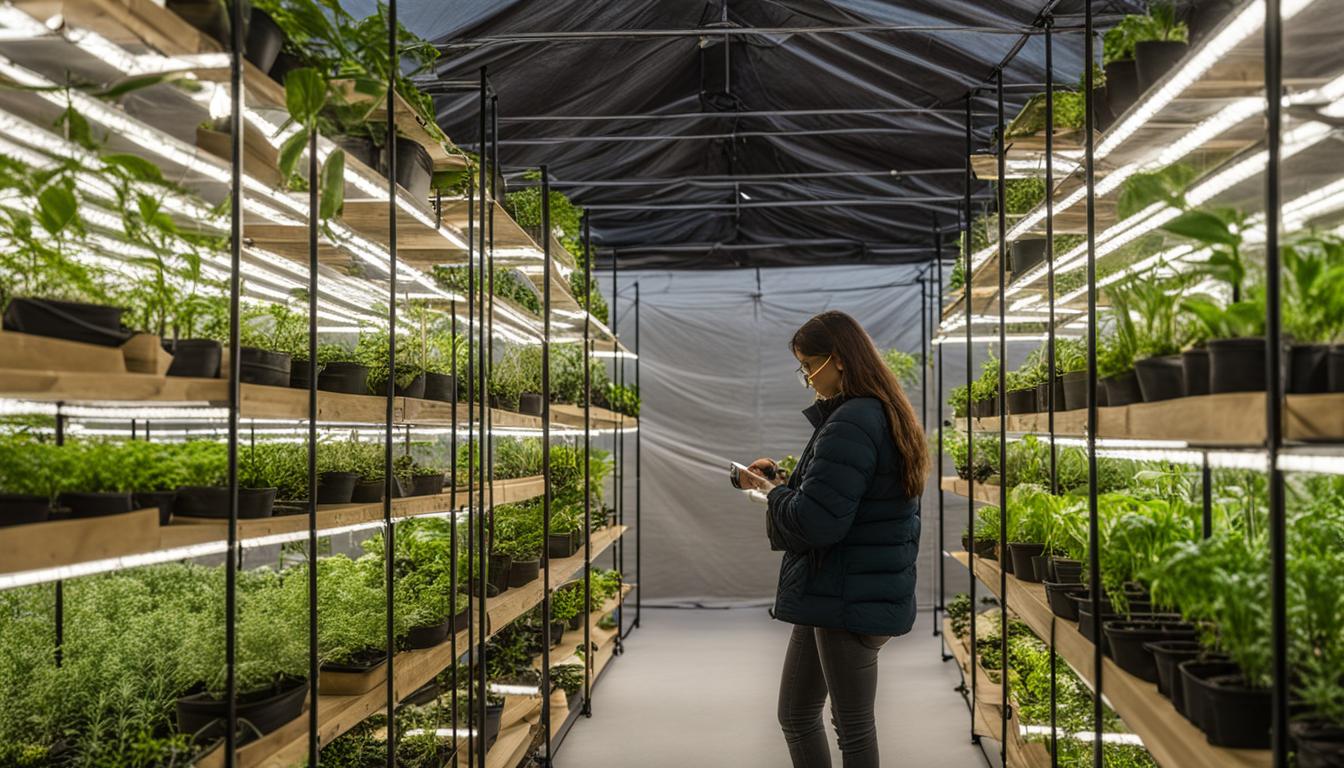
Indoor gardening has become increasingly popular, and choosing the right grow tent is crucial for successful cultivation. This comprehensive guide will provide you with the knowledge to make an informed decision when selecting a plant growing tent.
We will cover factors to consider, such as size, material quality, frame strength, ventilation, light reflection, accessibility, and budget, to help you choose the best grow tent for your needs.
Key Takeaways:
- Consider the size of your grow tent based on available space and the number of plants you want to grow.
- Look for grow tents made from durable, tear-resistant materials that are lightproof and waterproof.
- Choose a grow tent with a sturdy frame to ensure stability and prevent collapse.
- Ensure proper ventilation and airflow in your grow tent to maintain a healthy growing environment.
- Maximize plant growth by selecting a grow tent with a reflective interior for optimal light distribution.
Size Matters: Choosing the Right Grow Tent Size
When it comes to selecting a grow tent, size is a crucial factor to consider. The size of your grow tent will determine how many plants you can accommodate and the space required for equipment. Proper airflow is also essential for the health of your plants, so it’s important to ensure that the dimensions of the grow tent allow for adequate ventilation.
Assess the available space in your indoor setup and consider the types of plants you intend to grow. A larger grow tent will allow you to accommodate more plants, but it’s important to make sure that you have enough room for equipment such as lights, fans, and filters. Adequate space will also make it easier for you to access your plants for maintenance and care.
In addition to plant capacity and equipment space, airflow is an important consideration. Proper ventilation is crucial for maintaining a healthy growing environment and preventing issues such as mold and mildew. Ensure that the grow tent has sufficient ventilation ports for intake and exhaust options, allowing for efficient air exchange.
Estimated Plant Capacity for Different Grow Tent Sizes
| Grow Tent Size | Estimated Plant Capacity |
|---|---|
| 2′ x 2′ | 1-2 plants |
| 3′ x 3′ | 4-6 plants |
| 4′ x 4′ | 8-12 plants |
| 5′ x 5′ | 16-20 plants |
| 6′ x 6′ | 24-36 plants |
Note: The estimated plant capacity mentioned in the table is a general guideline and may vary depending on the size of the plants and the growing method used.
By carefully considering the size of your grow tent, you can create an optimal environment for your plants to thrive. Remember to account for plant capacity, equipment space, and airflow to ensure a successful indoor gardening experience.
Material Quality: Selecting a Durable and Functional Grow Tent
When choosing a grow tent, one of the most important factors to consider is the material quality. A durable and functional grow tent should be made from tear-resistant fabric that can withstand the rigors of indoor gardening. Look for tents constructed from thick canvas or Oxford cloth, as these materials are known for their strength and longevity.
Another essential quality to look for in a grow tent is its ability to be lightproof. Light leakage can disrupt the sensitive light cycles required for plant growth and flowering. Ensure that the tent you choose has a lightproof lining that prevents any external light from entering the tent.
In addition to being tear-resistant and lightproof, a high-quality grow tent should also be waterproof. Accidental spills or leaks can cause water damage to your plants and equipment. Look for tents that have a waterproof coating or are made from materials that repel water, keeping your plants safe and dry.
Comparison of Material Quality in Grow Tents
| Material | Tear-Resistant | Lightproof | Waterproof |
|---|---|---|---|
| Thick Canvas | ✓ | ✓ | ✓ |
| Oxford Cloth | ✓ | ✓ | ✓ |
| Other Materials | ✓ | ✓ | ✓ |
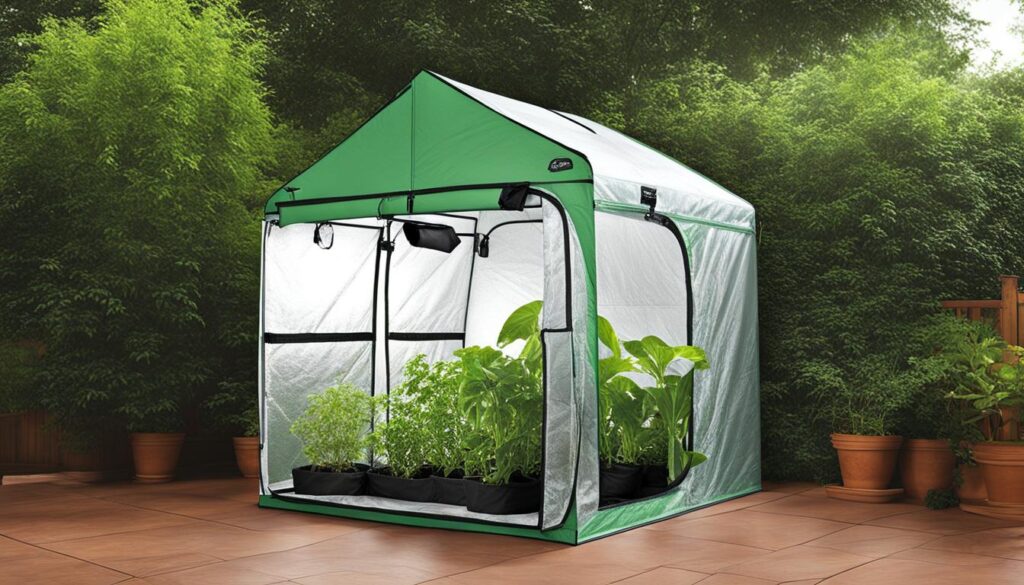
Choosing a grow tent with high-quality materials is crucial for ensuring the longevity and functionality of your indoor garden. By selecting a tear-resistant, lightproof, and waterproof grow tent, you can create an optimal environment for your plants to thrive.
Frame Strength and Stability: Ensuring a Secure Environment
When choosing a grow tent, it’s crucial to consider the frame strength and stability of the tent. A sturdy frame is essential for supporting the weight of lights, fans, filters, and other equipment, providing a safe and secure environment for your plants to thrive.
There are two main types of frames commonly used in grow tents: metal frames and heavy-duty plastic frames. Metal frames, typically made from steel or aluminum, offer superior strength and durability.
They can withstand the weight of heavy equipment and provide excellent stability. On the other hand, heavy-duty plastic frames are lightweight yet sturdy, offering good stability while being more affordable.
Comparison of Metal Frame and Heavy-Duty Plastic Frame for Grow Tents
| Aspect | Metal Frame | Heavy-Duty Plastic Frame |
|---|---|---|
| Strength | High | Moderate |
| Stability | Excellent | Good |
| Weight | Heavy | Light |
| Price | Higher | Lower |
The choice between metal and heavy-duty plastic frame ultimately depends on your specific needs and preferences. If you require maximum strength and stability, a metal frame might be the best option. However, if cost and weight are significant factors, a heavy-duty plastic frame can provide good stability at a more affordable price.
Ensuring Stability: Additional Tips
- Ensure that the frame is properly assembled and securely connected to prevent any wobbling or movement.
- Consider using additional frame supports, such as support poles or crossbars, to reinforce the stability of the tent.
- Regularly inspect and tighten any loose connections in the frame to maintain stability over time.
By selecting a grow tent with a strong and stable frame, you can create a secure environment for your plants, ensuring they have the support they need to grow and thrive.
Ventilation and Airflow: Maintaining a Healthy Growing Environment
Proper ventilation and airflow are essential for maintaining a healthy growing environment inside your grow tent. Adequate air exchange helps regulate temperature, humidity, and CO2 levels, promoting optimal plant growth. When choosing a grow tent, it’s crucial to consider ventilation and airflow options that will meet the needs of your plants.
Ducting and Ventilation Ports
One key feature to look for in a grow tent is the availability of ventilation ports. These ports allow you to connect fans, filters, and other ventilation equipment to ensure proper airflow.
Look for tents with multiple ventilation ports located strategically for both intake and exhaust. This setup allows fresh air to enter the tent while facilitating the removal of stale air.
The ventilation ports should also be compatible with ducting, which helps further control the airflow. Ducting allows you to direct air from one area to another, ensuring that air reaches all parts of the tent and promotes even circulation. It also helps with odor control by allowing you to connect carbon filters for effective removal of unwanted smells.
Intake and Exhaust Options
When considering airflow in your grow tent, it’s important to have a balance between intake and exhaust. Intake vents allow fresh air to enter the tent, providing plants with the necessary supply of carbon dioxide (CO2). Exhaust vents, on the other hand, remove hot, humid air and prevent the buildup of stagnant air that can lead to mold and disease.
Some grow tents come with adjustable intake and exhaust options, allowing you to regulate the airflow according to the specific needs of your plants. This flexibility ensures that you can create the optimal growing environment and maintain the desired temperature and humidity levels.
Managing Airflow for Different Stages
It’s important to note that airflow requirements may vary depending on the stage of plant growth. During the vegetative stage, plants benefit from a slightly stronger airflow to strengthen their stems and promote healthy development.
In the flowering stage, it’s crucial to reduce airflow to prevent bud rot and maintain proper humidity levels for flower production.
By understanding the ventilation and airflow options available in grow tents, you can create a healthy and controlled environment for your plants. Proper airflow promotes strong, healthy growth, minimizes the risk of pests and diseases, and maximizes the overall success of your indoor garden.
Light Reflection and Distribution: Maximizing Plant Growth
Efficient light distribution is crucial for maximizing plant growth in a grow tent. By optimizing the reflection and distribution of light, you can ensure that your plants receive the proper amount of illumination for healthy development. Two popular options for achieving this are Mylar grow tents and aluminum grow tents.
Reflective Lining
Mylar grow tents are known for their highly reflective interior lining. This material is specifically designed to bounce light back onto the plants, minimizing any light wastage.
The reflective properties of Mylar allow for a more even distribution of light, ensuring that each plant receives an adequate amount of illumination, regardless of its position within the tent. This results in more uniform growth and better overall plant health.
Aluminum grow tents also offer excellent light reflection capabilities. These tents are typically lined with diamond-patterned aluminum, which provides a highly reflective surface.
The reflective properties of aluminum ensure that the light is evenly distributed throughout the tent, reaching all parts of the plant. This promotes more balanced growth and helps maximize the yield potential of your indoor garden.
Optimized Light Distribution
Both Mylar and aluminum grow tents optimize light distribution by redirecting the light towards the plants. This helps minimize any light drop-off effect, ensuring that each plant receives adequate light for optimal growth.
By maximizing light distribution, these tents create a more efficient growing environment, allowing your plants to thrive and reach their full potential.
When choosing between Mylar and aluminum grow tents, consider your specific needs and preferences. Both options offer excellent light reflection and distribution capabilities, so it ultimately comes down to personal preference and budget.
Whichever option you choose, ensure that your grow tent has a reflective interior for maximum light utilization and even plant growth.
| Mylar Grow Tent | Aluminum Grow Tent | |
|---|---|---|
| Light Reflection | Highly reflective Mylar interior for optimal light distribution | Diamond-patterned aluminum lining for excellent light reflection |
| Light Wastage | Minimizes light wastage by reflecting it back onto plants | Minimizes light wastage through efficient light distribution |
| Growth Efficiency | Promotes more uniform growth and healthier plants | Creates a more efficient growing environment for maximizing yield potential |
Accessibility and Organization: Convenient Features for Easy Maintenance
When choosing a grow tent, it’s important to consider the accessibility and organization features that will make maintenance and care easier for you. A well-designed grow tent should have convenient features that allow for easy entry and maneuverability.
One key aspect to look for is large doors in a grow tent. These spacious entryways make it effortless to access your plants and equipment without any restrictions. Additionally, multiple access points within the tent provide flexibility and convenience, allowing you to reach different areas without disrupting the entire environment.
Internal features such as hanging bars, shelves, or mesh pockets can greatly contribute to maintaining a well-organized space. These features provide storage solutions, keeping your equipment, supplies, and tools easily accessible and neatly arranged.
By prioritizing grow tents with large doors, multiple access points, and practical internal features, you’ll ensure a smooth and efficient cultivation process, making it effortless to care for your plants and maintain a tidy growing environment.
| Features | Benefits |
|---|---|
| Large doors | Easy and unrestricted access to plants and equipment |
| Multiple access points | Convenient reach to different areas of the tent |
| Internal organization features | Efficient storage solutions for tools and supplies |
Budget Considerations: Finding a Balance between Quality and Price
When it comes to choosing a grow tent, establishing a budget is an important first step. While affordability is a key factor, it’s crucial not to compromise on the quality and durability of the tent. Investing in a high-quality, durable grow tent will ensure that you have a long-lasting solution for your indoor gardening needs.
While there are affordable grow tents available on the market, it’s essential to carefully consider the materials used and the overall construction of the tent.
Cheaply made tents may not withstand the demands of regular use, with the potential for tears, light leakage, and overall instability. By investing in a high-quality grow tent, you can have peace of mind knowing that your plants are housed in a secure and stable environment.
When comparing prices, it’s important to consider the long-term benefits of a durable grow tent. A high-quality tent will last for multiple growing seasons, providing consistent and reliable performance.
Also, premium grow tents often come with additional features such as reinforced corners, adjustable hanging bars, and customizable ventilation options, allowing for greater flexibility and convenience in your indoor gardening setup.
While it’s tempting to opt for the most affordable option, it’s crucial to find a balance between price and quality. By investing in a durable, long-lasting grow tent, you can create an optimal environment for your plants to thrive, ensuring successful indoor gardening for years to come.
Roof-Shaped vs. Rectangular Grow Tents: Selecting the Right Shape
When it comes to choosing a grow tent for your indoor gardening needs, one important decision to make is the shape of the tent. There are two main options: roof-shaped and rectangular. Each shape has its advantages and considerations that you should take into account to ensure the best results for your plants.
Advantages of Roof-Shaped Grow Tents
- More vertical growth space: Roof-shaped grow tents provide a taller interior space, allowing your plants to grow vertically without limitations. This is especially beneficial for tall plants or those that require more headroom.
- Efficient utilization of vertical space: The sloping roof design maximizes the use of vertical space, making it ideal for growers who want to make the most of limited floor area. It allows you to hang lights, fans, and other equipment from the roof, freeing up valuable floor space.
- Unique aesthetic appeal: Roof-shaped grow tents offer a unique and visually appealing shape that can enhance the overall look of your indoor garden. It adds a touch of elegance and sophistication to your growing space.
Advantages of Rectangular Grow Tents
- Optimized floor area: Rectangular grow tents are designed to provide maximum floor space for plant cultivation. If you have a large number of plants or want to grow plants that spread horizontally, a rectangular tent is the ideal choice.
- Economical option: Rectangular grow tents are generally more affordable compared to roof-shaped tents. If budget is a consideration, choosing a rectangular tent can be a cost-effective solution without compromising on quality.
- Storage and configuration options: The rectangular shape of these tents allows for better organization and configuration of your growing setup. You can easily set up shelves, racks, or other storage solutions to keep your equipment and supplies neatly organized.
When deciding between roof-shaped and rectangular grow tents, consider factors such as the height of your plants, available space, and your personal preferences.
Roof-shaped tents are great for maximizing vertical growth space and creating a visually stunning garden, while rectangular tents optimize floor area and offer flexibility in storage and configuration. Choose the shape that best suits your specific needs and goals for indoor gardening success.
Advanced Cultivation Techniques: Enhancing Indoor Gardening Experience
When it comes to indoor gardening, there are advanced cultivation techniques that can greatly enhance your experience and maximize the potential of your grow tent.
These techniques focus on optimizing light exposure, promoting balanced plant growth, and increasing overall yield. By incorporating these methods into your indoor garden, you can achieve better results and create a thriving environment for your plants.
Trellis Netting
Trellis netting is a technique that involves using a mesh or net to support the growth of your plants. By gently guiding the branches of your plants through the netting, you can promote a more even distribution of light and air.
This technique encourages the growth of strong, healthy branches and helps prevent overcrowding. Trellis netting also simplifies pruning and makes it easier to maintain a neat and organized garden.
SCROG Method
The SCROG (Screen of Green) method is another advanced technique that involves creating a horizontal screen or grid above your plants. As your plants grow through the screen, you gently tuck the branches underneath to encourage lateral growth.
This method effectively increases the amount of canopy surface area and promotes optimal light exposure for all parts of the plant. By implementing the SCROG method, you can achieve more balanced plant growth and maximize your yield potential.
Optimal Light Exposure
One of the key factors in maximizing the potential of your grow tent is providing optimal light exposure to your plants. This includes positioning your lights at the correct distance from your plants, ensuring uniform coverage, and maintaining the right light intensity throughout the growth cycle. Proper light exposure promotes photosynthesis and robust growth, leading to healthier plants and higher yields.
Maximizing Yield Potential in Grow Tent
By implementing advanced cultivation techniques such as trellis netting and the SCROG method, optimizing light exposure, and promoting balanced plant growth, you can maximize the yield potential of your grow tent.
These techniques help create an ideal growing environment, ensuring that your plants receive the necessary light, air, and support for optimal development.
With careful attention to detail and the implementation of these techniques, you can achieve impressive results and enjoy a successful indoor gardening experience.
| Advanced Cultivation Techniques | Description |
|---|---|
| Trellis Netting | A technique that uses a mesh or net to support plant growth, promoting a more even distribution of light and air. |
| SCROG Method | A method that involves creating a horizontal screen or grid above plants to encourage lateral growth and increase canopy surface area. |
| Optimal Light Exposure | Ensuring proper positioning, coverage, and intensity of light to promote photosynthesis and robust growth. |
| Maximizing Yield Potential | By implementing advanced techniques and providing an ideal growing environment, you can maximize the yield potential of your grow tent. |
Conclusion: Achieving Success with the Right Grow Tent
After considering the various factors mentioned in this guide, choosing the right grow tent is a crucial step towards successful indoor gardening. By selecting a tent that suits your specific needs, you can create an optimal environment for your plants to thrive.
The right grow tent provides the necessary space, ventilation, and light distribution for optimal plant growth. It ensures that your plants receive the ideal conditions they need to flourish, resulting in a thriving indoor garden.
Investing in a high-quality grow tent may require careful budget considerations. However, it is important to prioritize durability and functionality over a lower price. A well-chosen grow tent will last for multiple growing seasons, providing you with a long-lasting solution for your indoor gardening needs.
By following the guidelines outlined in this guide, you can make an informed decision when selecting a grow tent. Consider factors such as size, material quality, frame strength, ventilation, light reflection, accessibility, and budget.
With the right grow tent, you can create an environment that promotes optimal plant growth and helps you achieve success in your indoor gardening endeavors.
FAQ
How do I choose the right size grow tent?
Assess the available space in your indoor setup and consider the types of plants you intend to grow. Ensure that the dimensions of the grow tent allow for proper airflow, installation of equipment, and easy access to tend to your plants.
What should I look for in terms of material quality for a grow tent?
Look for tents made from robust and tear-resistant fabrics, such as thick canvas or Oxford cloth. The materials should be lightproof to prevent light leakage, reflective on the interior for optimal light distribution, and waterproof to protect against water damage.
How important is the strength and stability of the frame in a grow tent?
A sturdy frame is essential for supporting the weight of lights, fans, filters, and other equipment in a grow tent. The frame should be constructed from durable materials, such as metal or heavy-duty plastic, to ensure stability and prevent the tent from collapsing.
Why is ventilation and airflow important in a grow tent?
Proper ventilation and airflow are crucial for maintaining a healthy growing environment in a grow tent. Look for tents equipped with multiple ventilation ports, including options for intake and exhaust. These ports allow for efficient air exchange to regulate temperature, humidity, and CO2 levels.
How does light reflection and distribution affect plant growth in a grow tent?
Efficient light distribution is essential for maximizing plant growth in a grow tent. Look for tents with reflective interiors, such as those lined with Mylar or diamond-patterned aluminum. These materials redirect light back onto the foliage, minimizing light wastage and promoting more even growth.
What are some important accessibility and organization features to look for in a grow tent?
Look for tents with large doors and multiple access points, as well as easy-to-use zippers for convenient entry and maintenance. Internal features, such as hanging bars, shelves, or mesh pockets, help keep equipment and supplies organized.
How do I establish a budget for choosing a grow tent?
Establishing a budget is essential when choosing a grow tent. Prices can vary based on size, material quality, and additional features. It is important not to compromise on quality and durability. Investing in a high-quality grow tent that will last for multiple growing seasons is a wise decision in the long run.
What is the difference between roof-shaped and rectangular grow tents?
Roof-shaped grow tents provide more vertical growth space and efficient utilization of vertical space. Rectangular tents optimize floor area and offer storage and configuration options. Consider your plant’s height, available space, and personal preferences when deciding between the two shapes.
How can I enhance my indoor gardening experience with advanced cultivation techniques?
Techniques such as trellis netting and the “scrog” method promote optimal light exposure for all parts of the plant, resulting in balanced growth and higher yields. These techniques counter the light drop-off effect and ensure that each plant receives adequate light for maximum growth potential.
What is the importance of choosing the right grow tent for successful indoor gardening?
Selecting the right grow tent is essential for successful indoor gardening. By considering factors such as size, material quality, frame strength, ventilation, light reflection, accessibility, and budget, you can make an informed choice that creates the ideal environment for your plants to thrive.


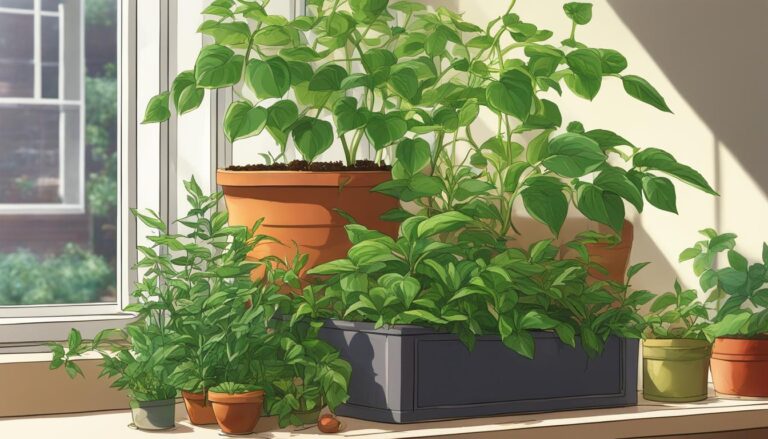
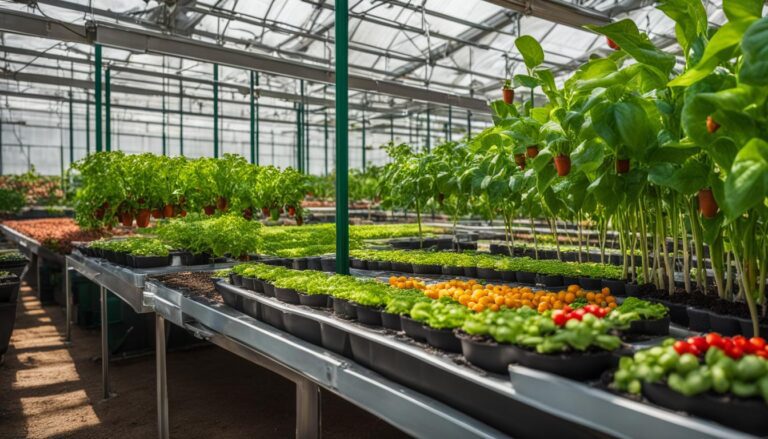
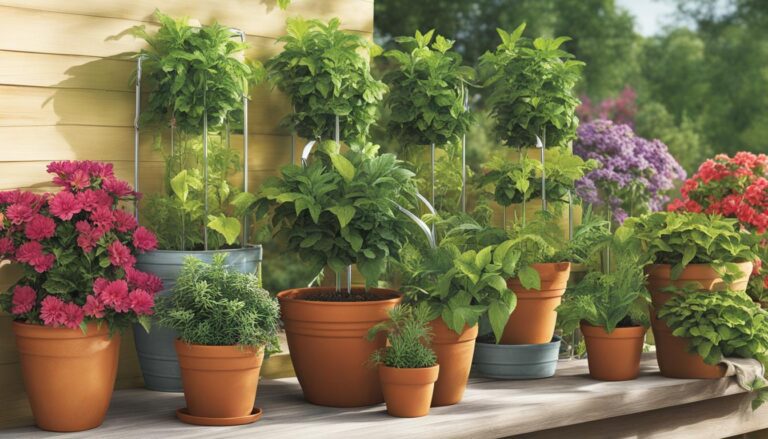
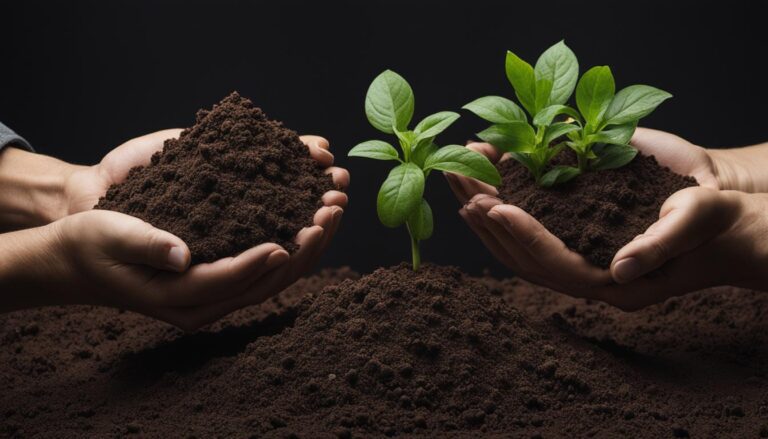
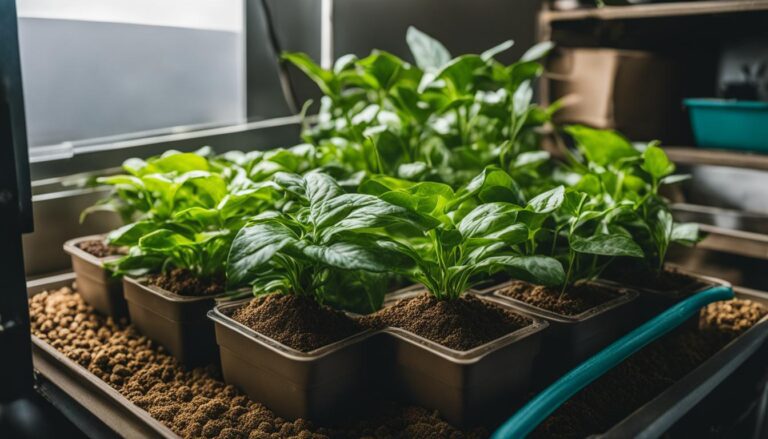
2 Comments
Comments are closed.